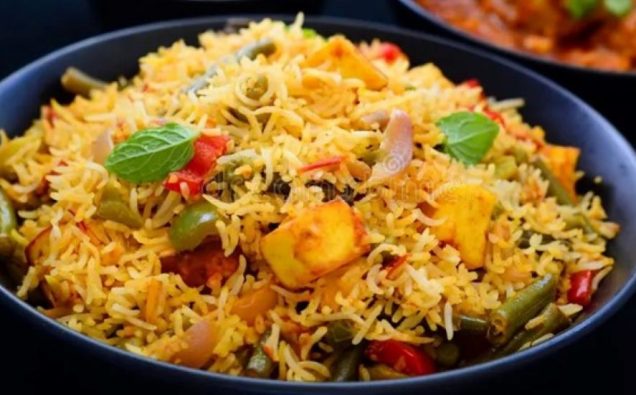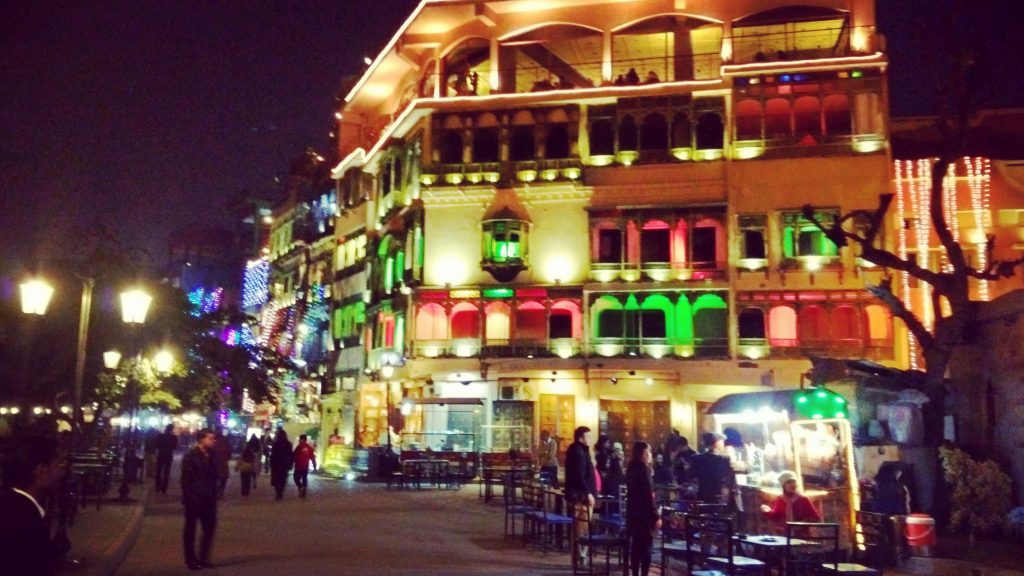
Just the word Briyani can be mouth-watering enough to make people go for one of the most popular dishes with people of all ages.
Generally, it is believed that the spice-filled aromatic Biryani is a Pakistani and Indian dish, a popular product of the subcontinental culture since both have so many irresistible cuisine varieties. However, the idea that Biryani is an entirely South Asian-origin dish remains an item on the checklist. The word ‘Biryani’ is a Persian word that means to stir or fry before cooking.
How did Biryani become popular in South Asia?
There are as varied opinions about this as the variety of spices that blend into the dish. Traditional accounts have it that when the Turk-Mongol conqueror Taimoor came to India in 1398, the cuisine came with the soldiers of his army, who fed on it.
At that time, rice, spices, and meat were filled in a clay pot and cooked in a dug-out pit that burned like an oven. After a while, the ground was dug and removed, and distributed to the army.
According to another tradition, it was the Arab merchants, who used to visit the coast of southern Malabar in India, who introduced the dish to this part of the world.
There is also a rice dish which was called “Onsoro” in Tamil literature more than a millennium ago.
It was cooked with a mixture of butter, rice, meat, turmeric, pepper, coriander and and was used in army meals.
Yet another account says Biryani was the creation of the mind of Mughal Emperor Shah Jahan’s beautiful and beloved wife Mumtaz Mahal, who is credited with first introducing the dish. It was to her memory that Emperor Jaha built the Taj Mahal.
It is said that once Mumtaz Mahal visited the soldier’s barracks and found them very slim and weak. She asked the royal kitchen to cook a dish of rice and meat that may serve as a balanced nutritional diet for the soldiers.

Modern studies, however, have established that Biryani is an Iranian dish. This also reinforces the fact that biryani is a Persian word meaning fried rice. The BBC has also traced Biryani’s origins to Iran.
In Iran, spiced rice is cooked for a long time in its own water on a low-heat burner.
In Mughal India, it was customary to fry rice without smoking, while saffron, various spices, and meat were added before cooking the dish on burning wood.
Biryani was also a popular dish of Hyderabad and Nawabs of Lucknow. Their chefs were famous for their distinctive dishes.
These rulers innovated their choice of biryani which became the most popular.
Now centuries after its arrival in the region, Biryani is one of the most popular dishes with several variations. In Pakistan, “Karachi biryani” is the most famous dish.
One of the best and most tasty biryani mixes is the one with all the ingredients mingled evenly with utmost measure. Traditionally biryani is cooked on slow heat which is called dumpling.
After mixing all the ingredients in this procedure, it is covered thoroughly so that the meat softens from the smoke and the juice mixes with rice. The slow-flame smoke doubles the delicious flavor of the biryani.
A good quality dish has 15 spices mixed in it but chefs and households use a variety of spice mixes to cook biryani.
In some coastal areas, biryani contains fish, prawns, and crab meat instead of red or white meat, while it is common to use aroma.

Basmati considered the top-quality rice from Pakistani and the Indian Punjab, is commonly used in Biryani in the two countries. However, the types of rice available and produced in each region are different and therefore biryani made from these kinds of rice also produce different flavors.
The flavors, colors, and textures of biryani have improved tremendously as have its ingredients over the past century, or so.
In Pakistan, Biryani is an all-season popular dish. Marshal Chris, a Pearl Continental Hotel Chef, known for his expertise in Lahore, has introduced many tasty and famous varieties of Biryani. The dish attracts customers in restaurants across food streets and restaurants in both the old city and Lahore’s posh areas.
We are going to tell you about some tasty and famous varieties of the dish.
Mughlai Biryani
Mughal rulers were fond of eating and finest dishes and cooking was a regular art during their time.
The popular biryani of that time consisted of juicy chicken pieces and rice soaked in kewra (pandanus flower water), and its fragrant aroma could increase anyone’s appetite.
Hyderabadi Biryani
The popularity of Hyderabadi biryani comes from the time when King Aurangzeb Alamgir appointed Nizam- ul- Mulk as the ruler of Hyderabad.
The chef of Nizam-ul-Mulk knew how to make 50 varieties of biryani using fish, crabs, quail, and deer meats. Each biryani was a different taste from the meat cooked with it.
Kolkata Biryani
Kolkata biryani is an invention of Nawab Wajid Ali Shah who wanted to innovate his favourite food.
At that time, due to the shortage of state treasury, the royal kitchen could not afford the expensive meat every day, so on the order of the nawab, golden fried potatoes were added to the biryani and then these potatoes became the identity of Kolkata biryani.
This kind of biryani has relatively fewer spices and has a slightly sweet flavor.
Sindhi Biryani
Sindhi biryani is enriched with green spices and various spices. It is also added sour curd and damson which gives it an exclusive taste.











